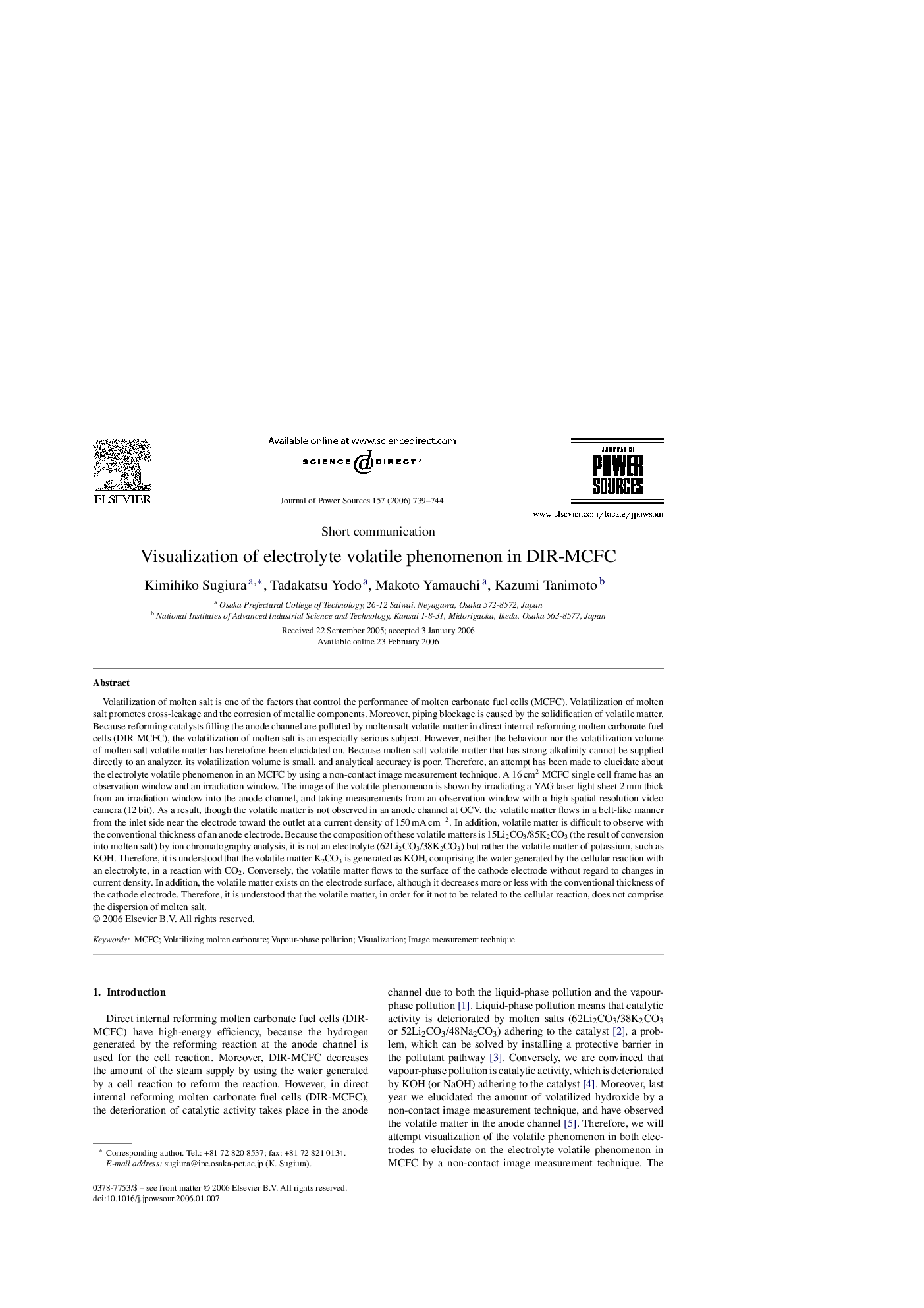| Article ID | Journal | Published Year | Pages | File Type |
|---|---|---|---|---|
| 1287756 | Journal of Power Sources | 2006 | 6 Pages |
Volatilization of molten salt is one of the factors that control the performance of molten carbonate fuel cells (MCFC). Volatilization of molten salt promotes cross-leakage and the corrosion of metallic components. Moreover, piping blockage is caused by the solidification of volatile matter. Because reforming catalysts filling the anode channel are polluted by molten salt volatile matter in direct internal reforming molten carbonate fuel cells (DIR-MCFC), the volatilization of molten salt is an especially serious subject. However, neither the behaviour nor the volatilization volume of molten salt volatile matter has heretofore been elucidated on. Because molten salt volatile matter that has strong alkalinity cannot be supplied directly to an analyzer, its volatilization volume is small, and analytical accuracy is poor. Therefore, an attempt has been made to elucidate about the electrolyte volatile phenomenon in an MCFC by using a non-contact image measurement technique. A 16 cm2 MCFC single cell frame has an observation window and an irradiation window. The image of the volatile phenomenon is shown by irradiating a YAG laser light sheet 2 mm thick from an irradiation window into the anode channel, and taking measurements from an observation window with a high spatial resolution video camera (12 bit). As a result, though the volatile matter is not observed in an anode channel at OCV, the volatile matter flows in a belt-like manner from the inlet side near the electrode toward the outlet at a current density of 150 mA cm−2. In addition, volatile matter is difficult to observe with the conventional thickness of an anode electrode. Because the composition of these volatile matters is 15Li2CO3/85K2CO3 (the result of conversion into molten salt) by ion chromatography analysis, it is not an electrolyte (62Li2CO3/38K2CO3) but rather the volatile matter of potassium, such as KOH. Therefore, it is understood that the volatile matter K2CO3 is generated as KOH, comprising the water generated by the cellular reaction with an electrolyte, in a reaction with CO2. Conversely, the volatile matter flows to the surface of the cathode electrode without regard to changes in current density. In addition, the volatile matter exists on the electrode surface, although it decreases more or less with the conventional thickness of the cathode electrode. Therefore, it is understood that the volatile matter, in order for it not to be related to the cellular reaction, does not comprise the dispersion of molten salt.
